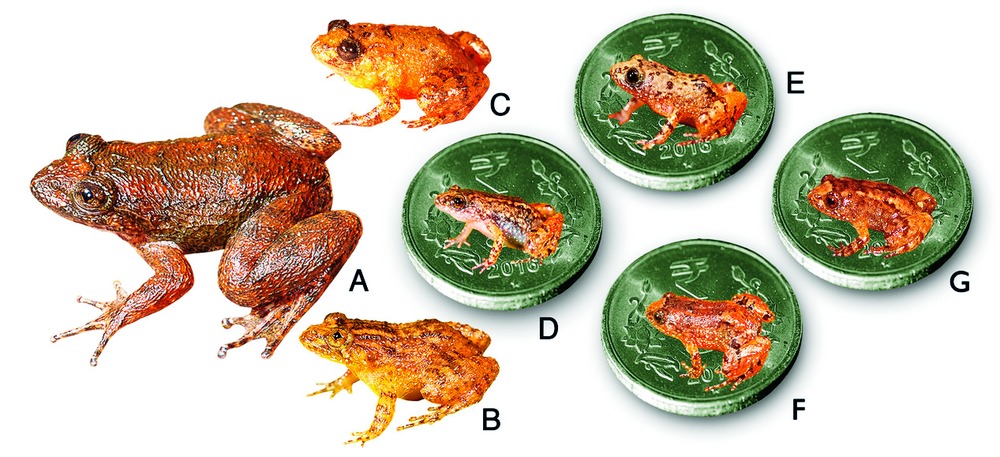
New Delhi, Feb. 21: Indian scientists have discovered seven species of frogs, previously unknown to science, four of them among the smallest in the world and possessing unique insect-like calls.
Their findings have expanded the diversity of so-called night frogs from 28 to 35 species, and underscore the position of India's Western Ghats as a global hotspot for amphibian diversity.
University of Delhi amphibian specialist Satyabhama Das Biju and his students spotted the frogs, some so small they will fit atop a coin or on a thumbnail, during surveys in the southern Western Ghats forests in Tamil Nadu and Kerala between 2013 and 2016.

"The miniature ones were the big surprise," said Sonali Garg, a scholar pursuing a PhD on amphibian diversity and the lead author of a paper describing the new species published today in the research journal PeerJ. "It was believed miniature frogs less than 15mm were exceptions - we've found four," she told The Telegraph.
The scientists believe the study of miniature frogs has evolutionary angles. The small bodies of such tiny frogs, Garg said, may allow them to occupy certain ecological niches. "But that is a topic for future research," she said.
Biju and his students have over the past decade catalogued over 80 new frogs across India, some with unique behaviour and habitats. Among them, a tree hole frog whose females drop unfertilised eggs into tree holes to feed their tadpoles, a frog that spends 11 months burrowed underground, a frog whose males ejaculate sperm on the backs of females, allowing fertilisation to take place without any physical contact between the sexes, and a set of dancing frogs, so called because their males wave their legs to attract females.
The scientists say this diversity is not surprising because studies in the past by molecular biologist Franky Bossuyt from Belgium and Biju have suggested that India, after separation from Africa, was a rich reservoir of amphibians.
Among the 28 previously known species, only three were smaller than 18mm. Among the seven new species, four are miniature frogs, sizes ranging from 1.2mm to 15.4mm.
But the Delhi scientists caution that many of the species they have discovered are threatened by the loss and fragmentation of habitats. All the seven species they have just described are currently known from single sites and some lie outside protected areas.
"At least five of these seven face significant threats from human activities and will require immediate conservation prioritisation, said Biju. The habitats of both the Athirappilly night frog found near the Athirappilly water falls and the Sabarimala night frog found near the Sabarimala pilgrimage site are under threat by the throngs of visitors at these sites.

